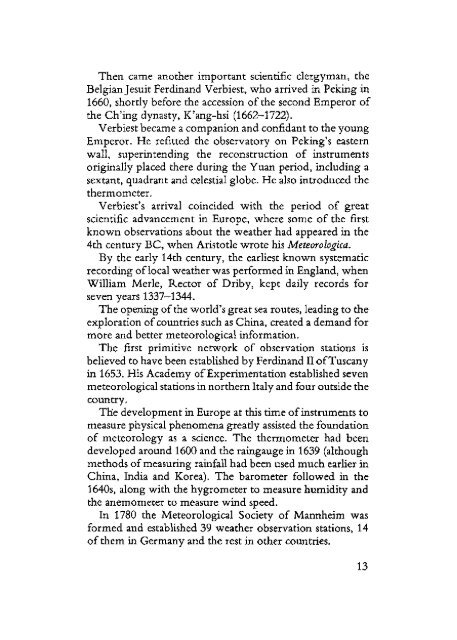Royal - HKU Libraries - The University of Hong Kong
Royal - HKU Libraries - The University of Hong Kong
Royal - HKU Libraries - The University of Hong Kong
Create successful ePaper yourself
Turn your PDF publications into a flip-book with our unique Google optimized e-Paper software.
<strong>The</strong>n came another important scientific clergyman, theBelgian Jesuit Ferdinand Verbiest, who arrived in Peking in1660, shortly before the accession <strong>of</strong> the second Emperor <strong>of</strong>the Ch'ing dynasty, K'ang-hsi (1662-1722).Verbiest became a companion and confidant to the youngEmperor. He refitted the observatory on Peking's easternwall, superintending the reconstruction <strong>of</strong> instrumentsoriginally placed there during the Yuan period, including asextant, quadrant and celestial globe. He also introduced thethermometer.Verbiest's arrival coincided with the period <strong>of</strong> greatscientific advancement in Europe, where some <strong>of</strong> the firstknown observations about the weather had appeared in the4th century BC, when Aristotle wrote his Meteorologica.By the early 14th century, the earliest known systematicrecording <strong>of</strong> local weather was performed in England, whenWilliam Merle, Rector <strong>of</strong> Driby, kept daily records forseven years 1337-1344.<strong>The</strong> opening <strong>of</strong> the world's great sea routes, leading to theexploration <strong>of</strong> countries such as China, created a demand formore and better meteorological information.<strong>The</strong> first primitive network <strong>of</strong> observation stations isbelieved to have been established by Ferdinand II <strong>of</strong> Tuscanyin 1653. His Academy <strong>of</strong> Experimentation established sevenmeteorological stations in northern Italy and four outside thecountry.<strong>The</strong> development in Europe at this time <strong>of</strong> instruments tomeasure physical phenomena greatly assisted the foundation<strong>of</strong> meteorology as a science. <strong>The</strong> thermometer had beendeveloped around 1600 and the raingauge in 1639 (althoughmethods <strong>of</strong> measuring rainfall had been used much earlier inChina, India and Korea). <strong>The</strong> barometer followed in the1640s, along with the hygrometer to measure humidity andthe anemometer to measure wind speed.In 1780 the Meteorological Society <strong>of</strong> Mannheim wasformed and established 39 weather observation stations, 14<strong>of</strong> them in Germany and the rest in other countries.13
















